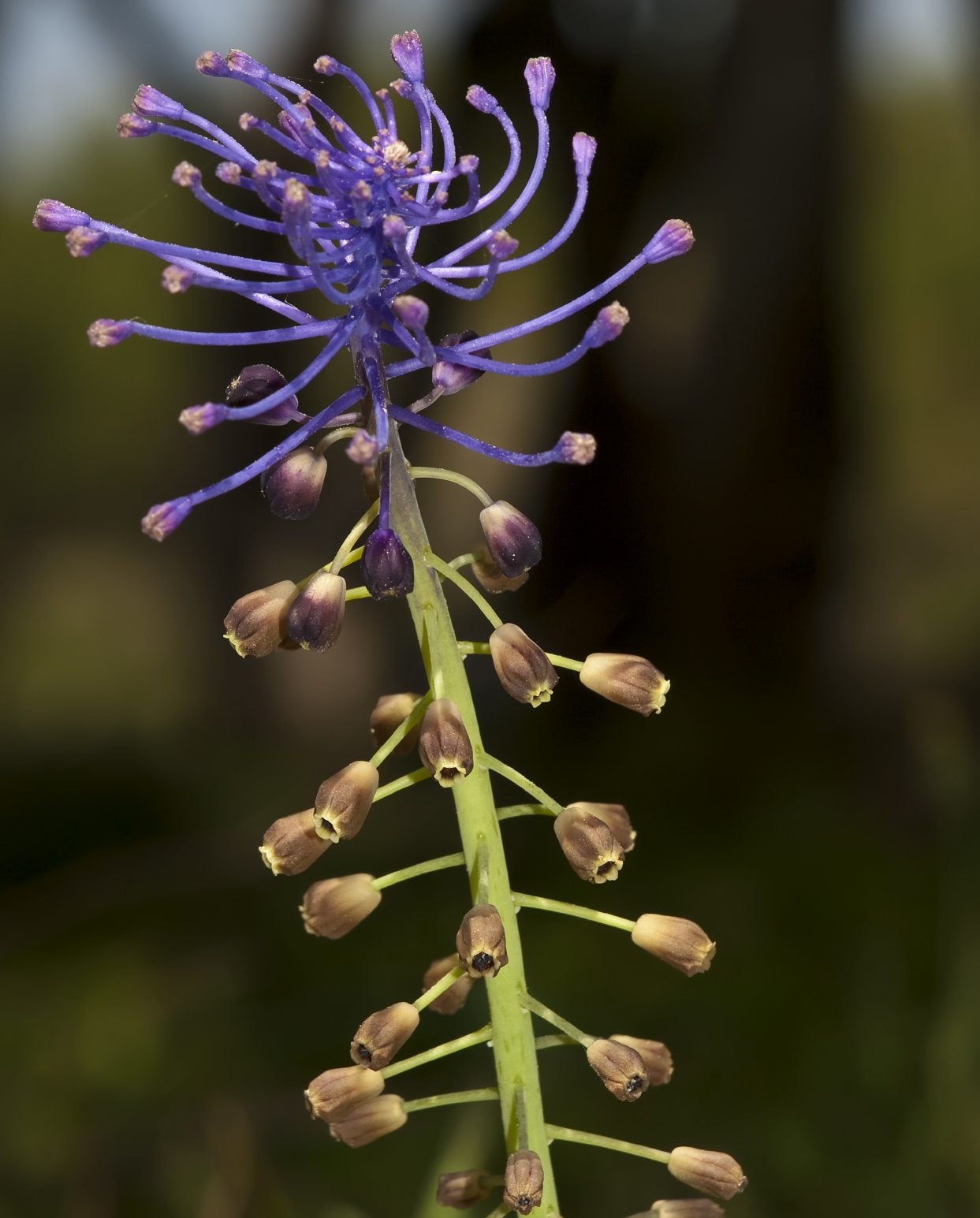Tassel Hyacinth Growing: Learn About Tassel Hyacinth Bulbs In The Garden


Tassel hyacinth bulbs, known as lampascioni, are considered a delicacy in Mediterranean countries where the plant is cultivated for this purpose. However, many gourmets think the flavor of wild plants is superior to cultivated bulbs. Read on for more wild tassel hyacinth info, and learn how to take care of tassel hyacinths in your garden.
Wild Tassel Hyacinth Info
Tassel grape hyacinth (Leopoldia comosa or Leopoldia muscari), also known as tassel hyacinth, fringe hyacinth, or musk hyacinth, is a wildflower native to Turkey, Iraq, and southeastern Europe. Tassel grape hyacinths are similar to the familiar garden-variety grape hyacinths, but the brownish green flowers are topped by tufts of violet-blue, fringe-like blooms. The lower part of the flowers are fertile, but the tassels are sterile. Tassel hyacinth bulbs are hardy to USDA plant hardiness zones 4 through 8. Tassel grape hyacinth is a woodland plant that prefers dappled sunlight or light shade. It works well in garden edges, beds, or along garden paths. However, consider carefully before planting tassel grape hyacinth. Although the plant is non-native in the United States, tassel grape hyacinth has naturalized across much of the United States. It multiplies rapidly and is considered an invasive plant in some areas.
Tassel Hyacinth Growing
Tassel hyacinth growing is simple, but the plant requires well-drained soil to prevent the bulbs from rotting. If the soil is soggy, add several inches (8 cm.) of compost or mulch to improve drainage. Plant the round tassel hyacinth bulbs about 3 inches (8 cm.) deep in fall, with the pointy side up. Allow 2 to 4 inches (5-10 cm.) between each bulb. Water deeply immediately after planting. The bulbs will bloom in spring.
Care of Tassel Hyacinths
Water tassel hyacinths well while the plant is growing and developing leaves, then cut back on water after the blooms fade. Leave the foliage in place until the leaves turn yellow, as the green foliage absorbs sunlight, thus providing energy to feed the bulbs for the coming blooming season. Once established, tassel grape hyacinth is easy to propagate by dividing and planting the bulb offsets.
Sign up for the Gardening Know How newsletter today and receive a free copy of our e-book "How to Grow Delicious Tomatoes".

A Credentialed Garden Writer, Mary H. Dyer was with Gardening Know How in the very beginning, publishing articles as early as 2007.